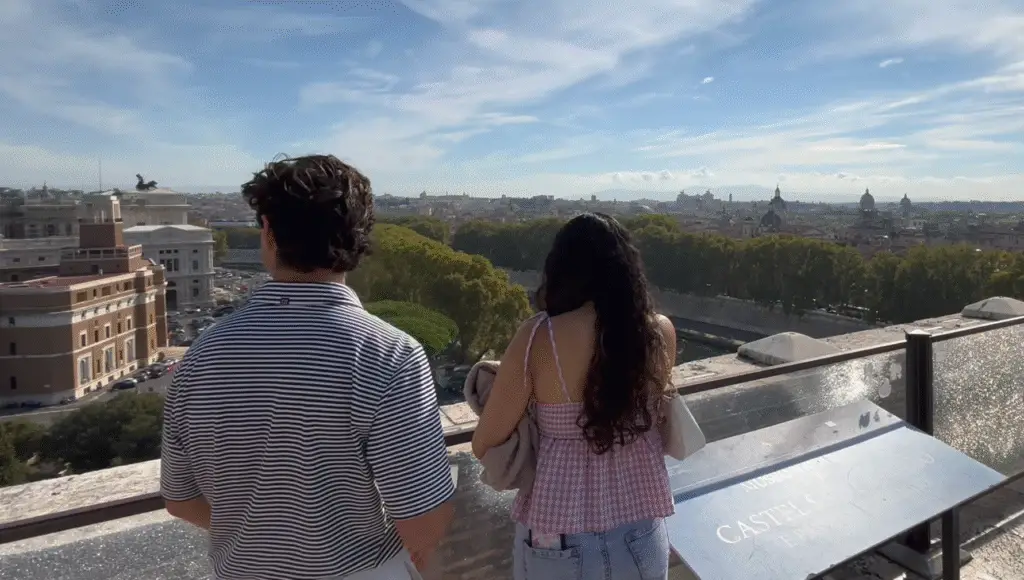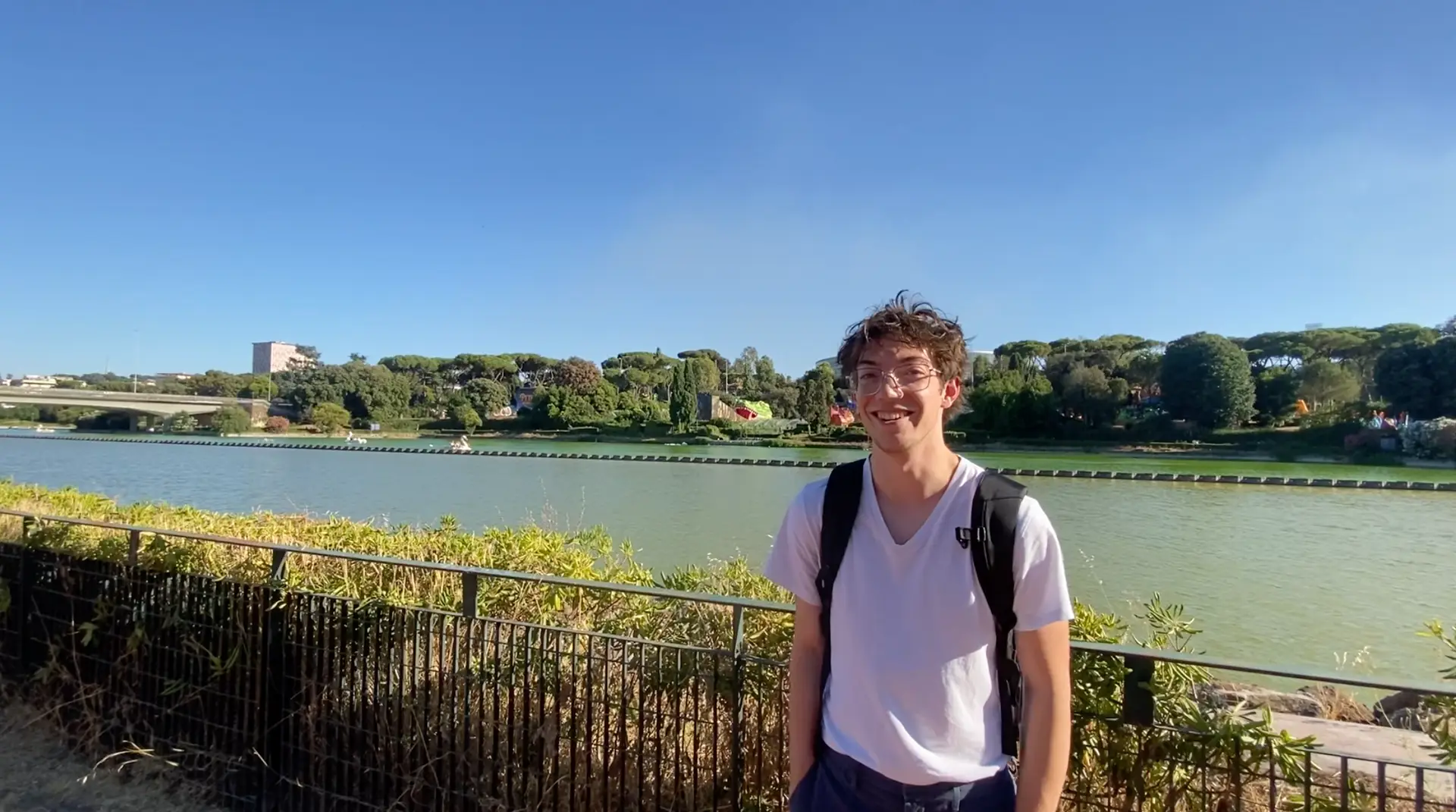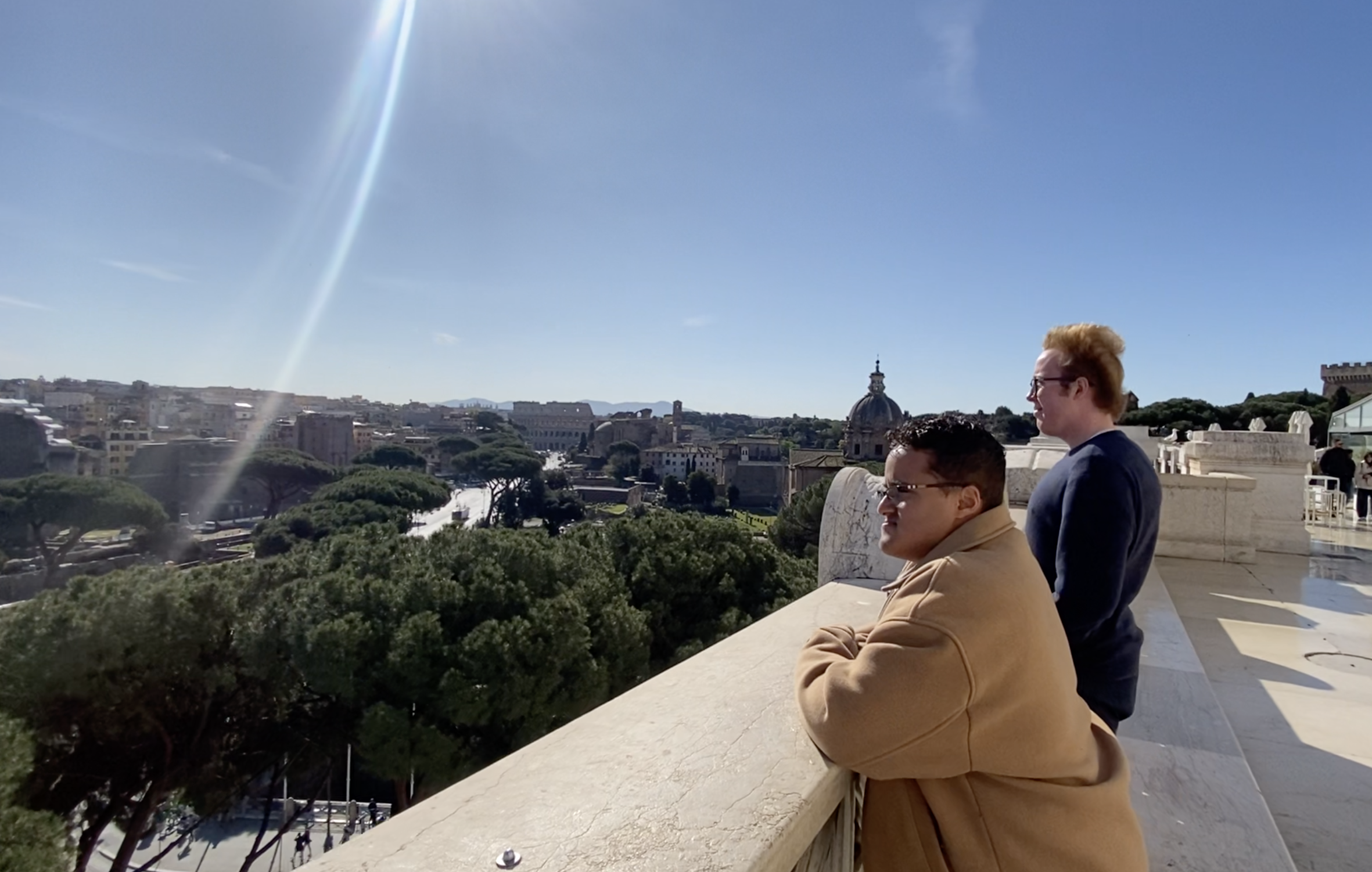Earlier this Fall 2025, we interviewed Connecticut College student Kaley Mendoza Pineda and Penn State University student John Murray. Both are here at the Pantheon Institute this semester learning about architecture via the incredible landscape that is the Eternal City. For this interview, we explored the Castel Sant’Angelo, and incredible Roman monument with other 2000-years of transformative history.
As a Bachelor of Arts Architecture major, Kaley enjoys studying architecture due to the creative freedom studying architecture at Connecticut College. Able to combine design and STEM courses, Connecticut College encourages students to think creatively and embrace their true authentic self. Kaley decided to come to Rome to immerse herself in Rome’s history and surround herself in a rich urban landscape of historical design and transformation.
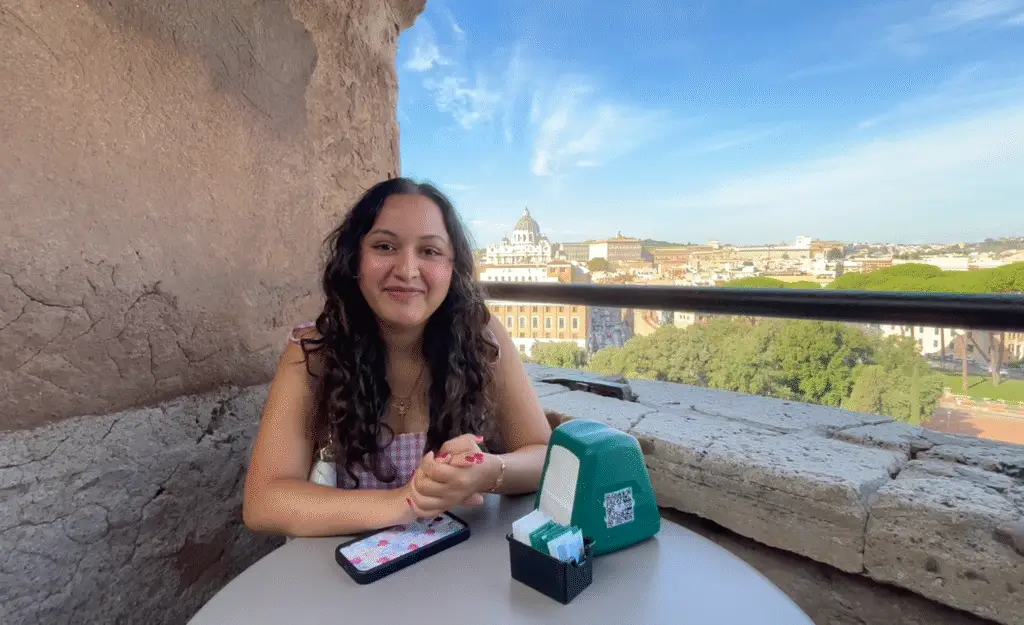
Kaley sitting at the Castel Sant’Angelo Cafe.
“It’s very immersed, the classes take place walking through the city, which I think is a very amazing experience compared to just sitting in a classroom. So if you want to get that hands-on approach, and also experience it fully, I think Pantheon is the way to go.” – Kaley Mendoza Pineda
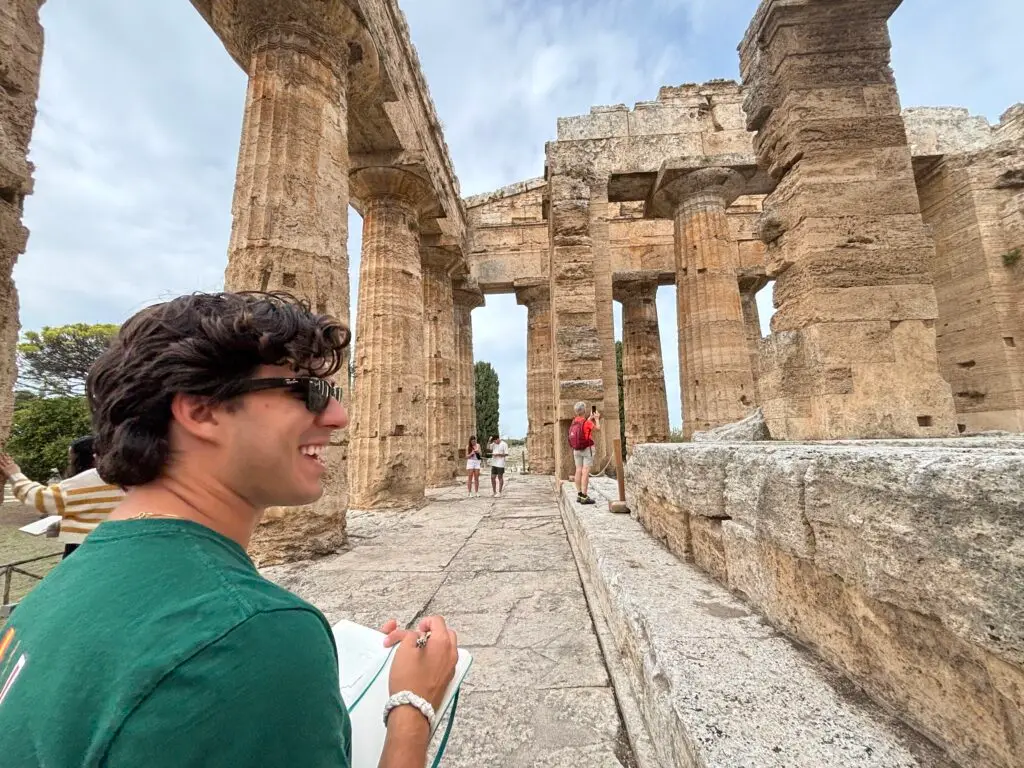
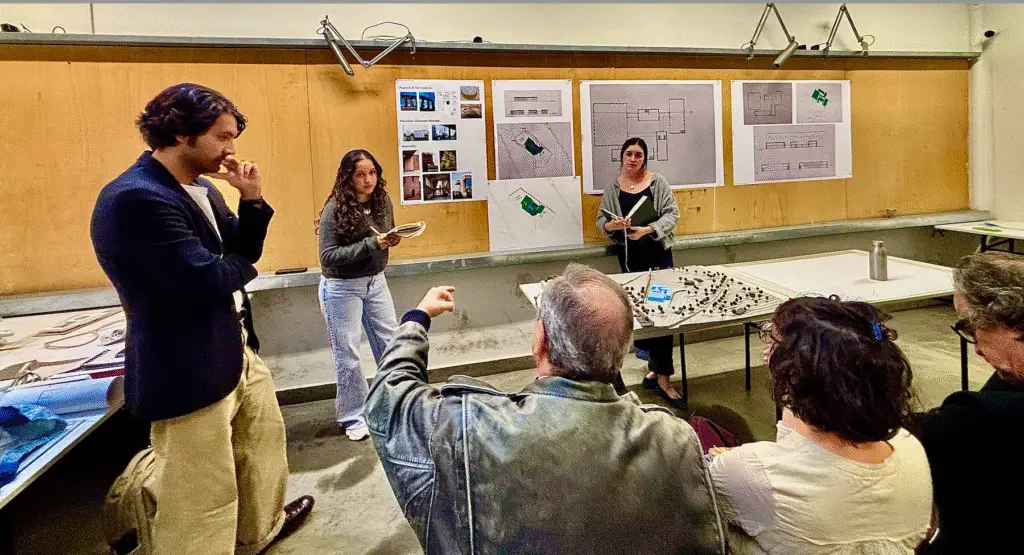
Top: John sketching on an academic fieldtrip to Paestum.
Bottom: Kaley presenting her studio project, alongside fellow CC student Kate Moroney, at midterm crits. Professors left to right are Edoardo Cappella, Romolo Martemucci, Lavinia Nannini, and guest critic Luca Garofalo.
Currently a 5-year Bachelor of Architecture student, John is focused historical preservation. The hands-on component of architectural design allows for a tactile creative process that can be as involved and inclusive as you want. John chose to study architecture in Rome not only to investigate the transformative legacy of architectural design, but also to immerse himself in his family’s culture and learn more about his own Italian heritage.
Both John and Kaley explain that being at the Pantheon Institute has allowed for a very immersive experience, allowing them to witness, first-hand, the scale and details of Rome’s incredible history through their various cartography tours and site visits for class. Not only that, but Pantheon Institute takes students all around Italy so students can literally walk through thousands of years of history, from ancient Greek temples in Paestum to the Renaissance streets of Florence to the canals of Venice.
“It’s so different to go on our Cartography walks or go on site visits for Studio and actually see the things we’ve been learning about for so many years. Just being able to experience it first hand, it’s so much different than seeing it from a picture or video. … Seeing the scale of things and how big actually everything is, it makes you realize how big the world is.” – John Murray
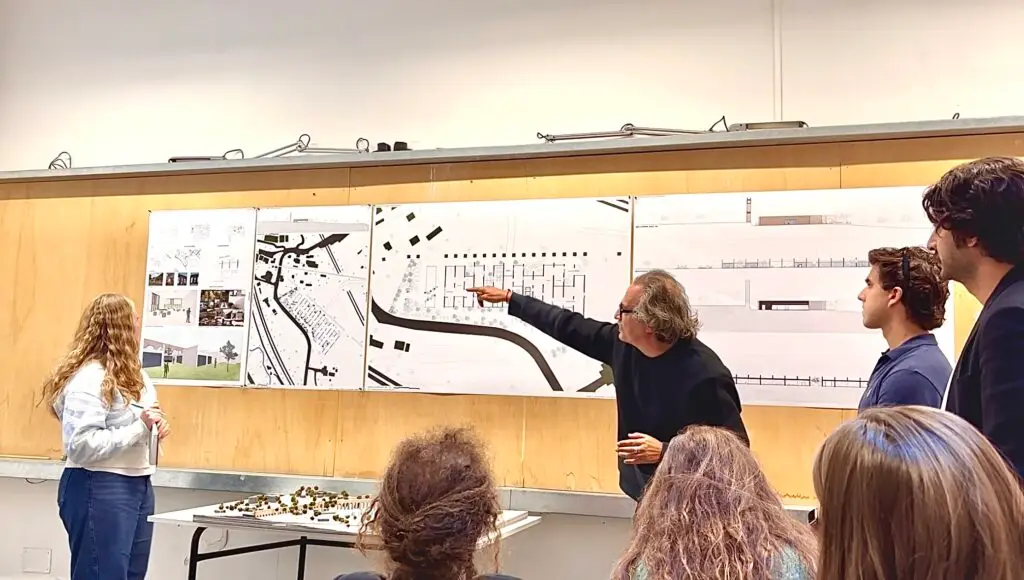
John and fellow PSU student Catherine Tumbarello presenting during midterm crits.
Students on an academic field trip in Venice.
While speaking to Kaley and John, we toured the Castel Sant’Angelo, one of the major landmarks of Rome that bears witness to a myriad of cultural and architectural transformation across 2000 years. On going now is the exhibition Castel Sant’Angelo 1911-1925. The Dawn of a Museum that celebrates the Castel’s 100-years of being a museum and showcases drawings, painting, photos, models, and other artifacts that reveal the Castel’s illustrious and multifaceted history. You can read more about the ongoing exhibit here and view some photos from the exhibition in the gallery below.
Originally constructed as a mausoleum for Emperor Hadrian and his family in 135 AD, it was later integrated into the Aurelian Walls and converted to a military fortress in 403 AD. Throughout the Middle Ages, the Castel then served as a strategic fortress and a secure refuge for popes. Throughout the upper levels of building you can find ornate rooms decorated with massive marble fireplaces, colorful marble floors, and stunning ceiling frescos, evidence of the former grandeur of Papal life in the Castel.
Simultaneously, from the 6th to the 19th century, the Castel served as a state prison. The entry levels to the Castel are comprised of winding stone ramps that circle up into the heart of the Castel. Original chains from the prison are now on display in the museum. Only in 1901 was the Castel decommissioned to be turned into the museum it remains today.
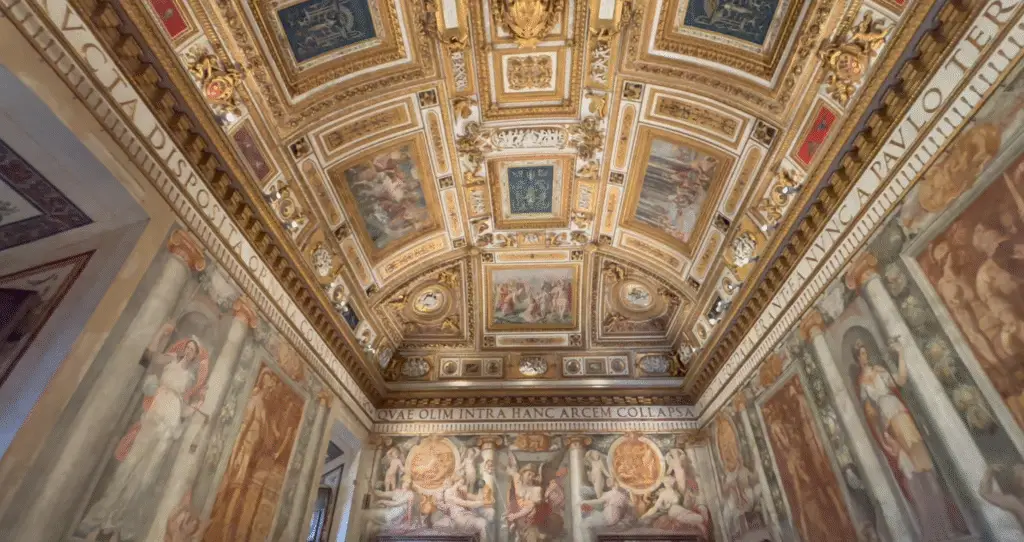
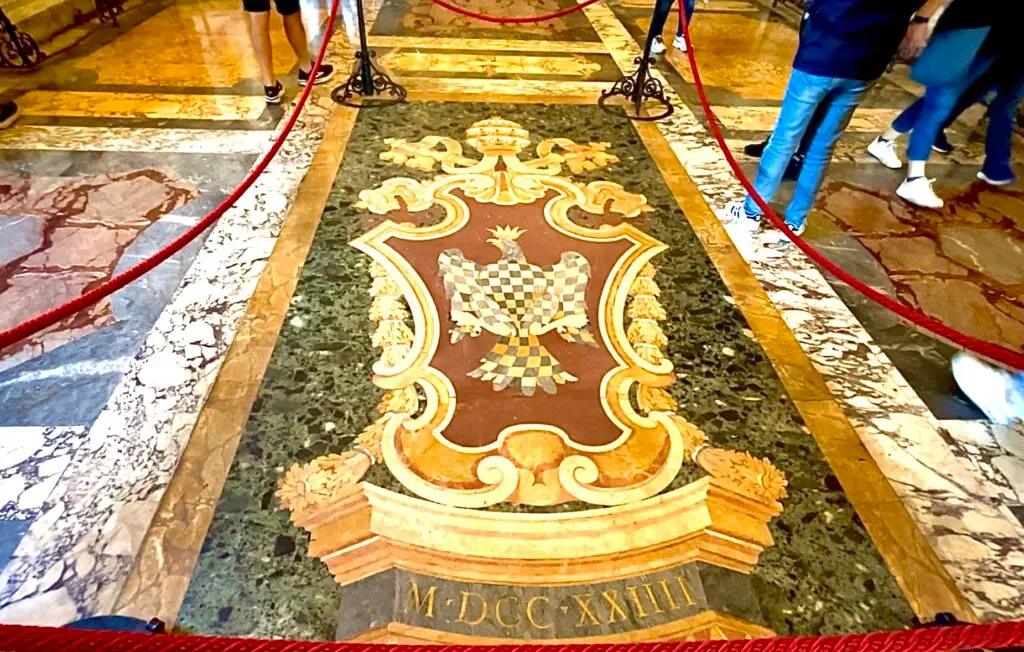
Top: ornate ceiling in a previous papal room.
Bottom: coat of arms of Pope Paul V (Camillo Borghese), who was a frequent resident of the castle and had it decorated.
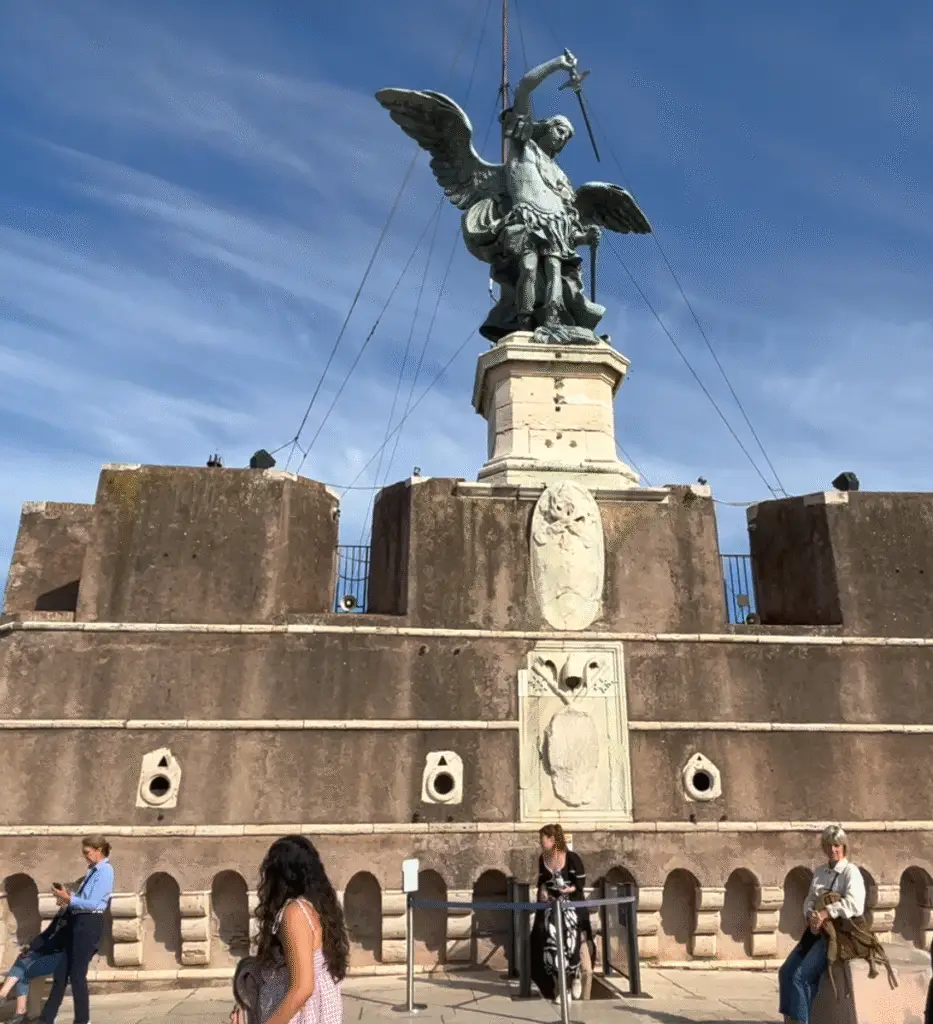
One of the most spectacular elements of the Castel is the archangel Michael atop the highest point on the Castel terrace, with sword in hand, standing vigilant in commanding and powerful beauty. The legend is that, in 590 AD, Pope Gregory I saw a vision of the angel upon the Castel, then only known as Hadrian’s Tomb. The angel sheathed his sword, a divine sign signalling the end of the current plague that had ravaged Rome. Moved by this miraculous vision, the Pope then renamed Hadrian’s Tomb as the Castel Sant’Angelo, or the “Castle of the Holy Angel”. A statue of the Archangel was placed on top to commemorate the miracle, however the current bronze statue on display today was created in 1753 by Peter Anton von Verschaffelt.
Thank you for talk to us, John and Kaley. We are so happy to have you with us this Fall 2025 semester and we are so happy to be a part of your academic journey in discovering Rome. We hope your time here with us helps inspire your architectural aspirations to consider new and transformative ways of using the spaces around you. Can’t wait to see what is next for you both!
